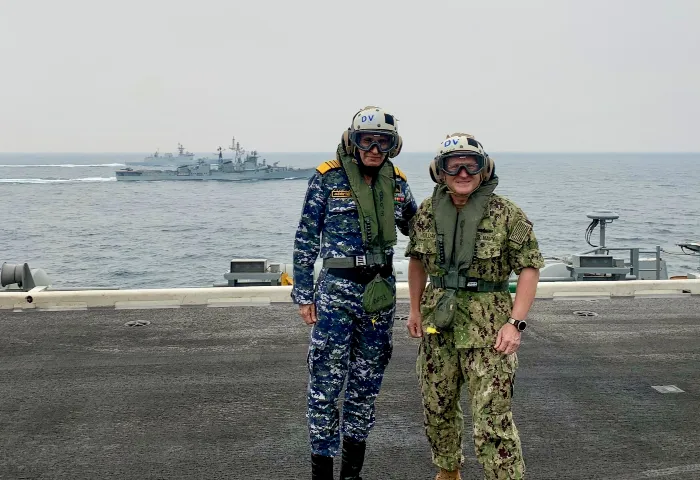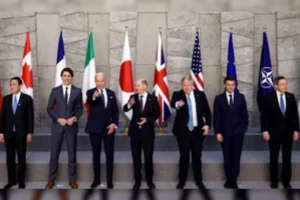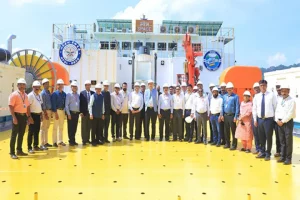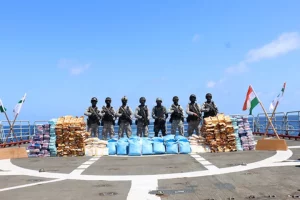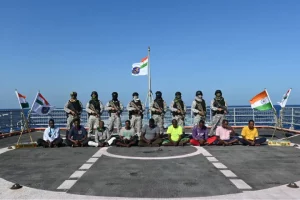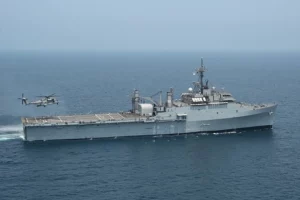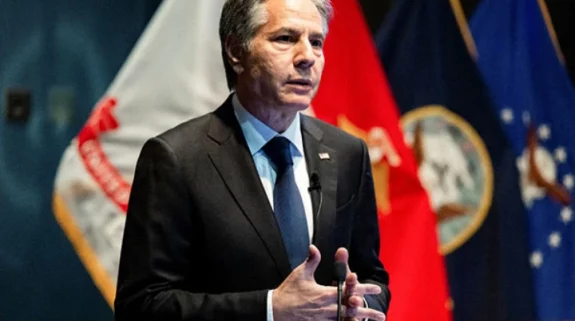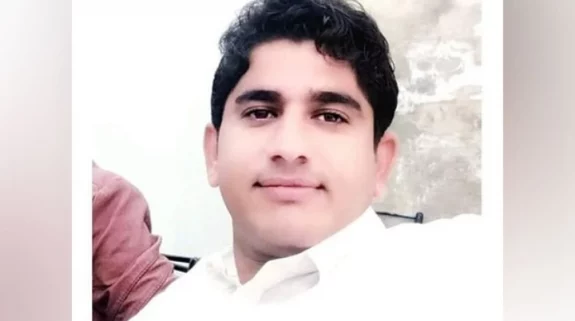The naval chief of United States has unveiled his vision of a free and open Indo-Pacific region where India stands tall in helping deter China in "stealing" the area's resources and bullying maritime neighbours.
The US Navy has demonstrated its commitment to the rules-based order in the Indo-Pacific region, especially the South China Sea, by working closely with its allies and partners.
India too, along with other Quad partners Japan and Australia, has confirmed its commitment to freedom of the seas.
In an obvious reference to China, Admiral Gilday, while delivering a keynote address to the Indian Navy at the Western Naval Command in Mumbai on Friday, lauded the political will of the quartet.
"Not every nation shares our vision of a free and open world. Some seek to undermine its legitimacy by corroding international laws and norms, stealing resources and infringing upon the sovereignty of other nations," observed the US naval chief.
Make no mistake, the @indiannavy is one of our closest strategic partners, and our relationship is a stronghold of a #FreeandOpenIndoPacific. 🇮🇳🇺🇸 pic.twitter.com/uoAqmxjWUx
— USNavyCNO (@USNavyCNO) October 15, 2021
"Safe and secure seas cannot be preserved without a strong maritime force… That is what we must deliver every single day," he added.
Gilday said that providing a safe, secure, and stable maritime system is an imperative to all of mankind and not just to India and the United States.
"This is a responsibility with truly global consequences. It cannot be taken for granted … peace on the sea does not happen by accident. Though our nations may have different histories, cultures and geographies, as sailors we are united by the sea. Cooperation between our navies ensures that our most vital resource – seawater – is shared sustainably and responsibly."
The US Admiral's remarks are bound to raise hackles in Beijing, as they have been made during the course of the Malabar exercise that has just been held along India's east coast with the region's two other major democracies – Australia and Japan.
During his visit to Mumbai, Gilday also met Vice Admiral Hari Kumar, Flag Officer Commanding-in-Chief of the Western Naval Command.
On Thursday, the US Chief of Naval Operations (CNO) had hosted 12 senior Indian Navy officers aboard USS Carl Vinson – a giant US aircraft carrier during the course of Exercise Malabar.
The visit to the aircraft carrier, which included Chief of Naval Staff Adm. Karambir Singh and Vice Adm. A B Singh, Commander in Chief, Eastern Naval Command, took place during the second phase of the exercise off the coast of India.
"This visit to Carl Vinson during Malabar was an important opportunity to see first-hand the integration between our two navies at-sea," Gilday said.
"By our navies continuing to exercise together, as we are doing right now alongside Japanese and Australian naval forces, there is no doubt our partnership will only continue to grow. Cooperation, when applied with naval power, promotes freedom and peace, and prevents coercion, intimidation and aggression," he commented.
Gilday stressed that New Delhi is one of Washington's "closest strategic partners" and the relationship between the two is a stronghold of a free and open Indo-Pacific.
![]() The visit underscored the growing strength of the India-US Defence partnership as the two countries work in concert with like-minded partners to promote shared goals. The United States had designated India as a Major Defence Partner in 2016.
The visit underscored the growing strength of the India-US Defence partnership as the two countries work in concert with like-minded partners to promote shared goals. The United States had designated India as a Major Defence Partner in 2016.
"Safe and secure seas cannot be preserved without a strong maritime force. Our relationship is unwavering. The US Navy is committed to maintaining a steady course of naval cooperation and growing the connections between our two navies. I am committed to that. Without a doubt, our greatest strength lies in unity," he said.






